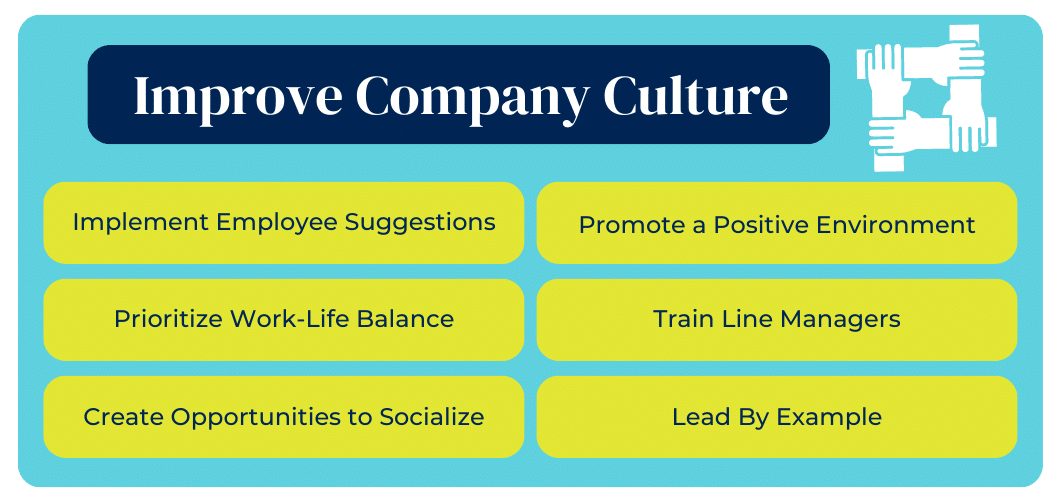Home »
The Vanishing Workforce. The Causes and The Cures.
Feel like it’s been unusually hard to hire lately – like, for the past few years? It’s not your imagination. U.S. employers are dealing with an unprecedented labor shortage. According to the U.S. Chamber of Commerce, if every unemployed person in the country got hired tomorrow, there would still be about 4 million open jobs.
A labor shortage is what happens when there are more jobs available than there are qualified workers to fill them. “Qualified” is a keyword (and why some people still have trouble finding a job). Skills gaps cause the shortage to hit some industries, like the trades, harder than others.
Labor shortages are especially difficult for small and growing businesses. Those companies operate on tighter margins than established corporations, making it harder to ride out the decreased production a shortage can bring.
JUMP TO
Why aren’t people returning to work?
When will this labor shortage end?
How to deal with the labor shortage
Why aren’t people returning to work?
The American workforce has about 3 million fewer workers today than it had in February 2020. There’s no single reason behind the decline; it’s a perfect storm of factors.
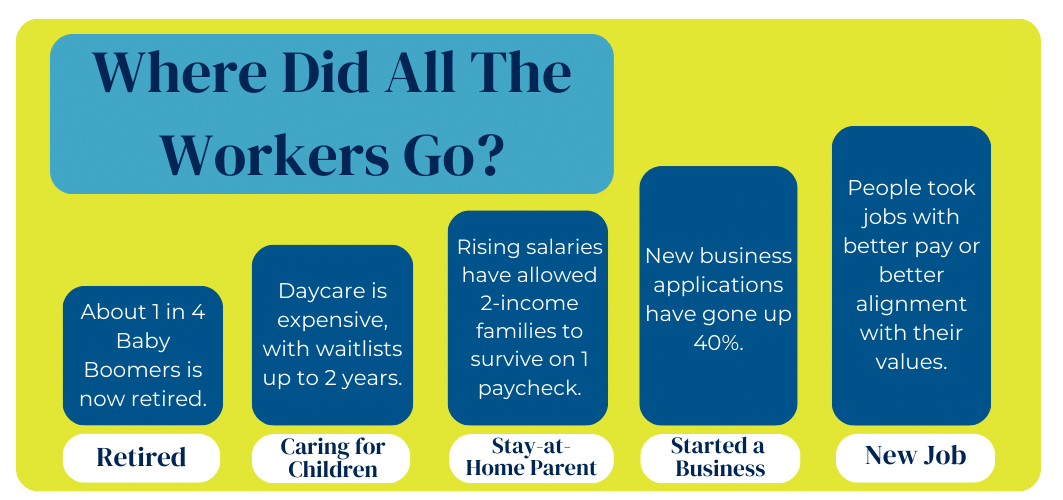
Decreased access to childcare
More than a quarter of eligible workers, most of them women, are staying home to care for children or other family members. Most industries have rebounded from the pandemic, but the country is still short more than 60,000 early childhood teachers.
That means there are about 10% fewer daycare openings today than there were in 2019. Parents wait up to two years to nab one of these coveted spots. To make matters worse, in 34 states the cost of full-time daycare rivals in-state college tuition, making it unaffordable for working-class families.
Rising salaries
Competition for workers has led many companies to increase salaries. Bigger paychecks mean families that previously relied on two incomes can now get by on one.
Retiring Baby Boomers
Almost 29 million people retired in the fall of 2020, a jump of 13% over the previous year. Experts have warned for years that the country was unprepared to deal with the Boomer generation’s mass exodus from the workforce. It’s starting to look like those predictions were right.
Fewer working teens
For decades, industries like retail and food service relied on teenagers to fill low-wage entry-level positions. Today, the number of teens in the workforce is half what it was in 1998, making part-time workers hard to come by.
Theories about why today’s teens aren’t looking for jobs mostly deal with soaring college costs and tough competition for financial aid. Experts speculate teens are dedicating their free time to unpaid internships, volunteer work, and academic pursuits that look good on a scholarship application.
Career switchers
In many cases, people have gone back to work – just not in their pre-pandemic roles. The U.S. Chamber says hiring has outpaced quitting every month since November 2020.
So where did all those workers go? According to a survey by Indeed, the pandemic sparked a lot of soul-searching. People realized life was too short to spend in a job they didn’t like. And the temporary shift to remote work and flexible schedules changed expectations of work-life balance.
The media dubbed this movement The Great Resignation, but it was more like The Great Shuffle. Most of the people who quit their jobs didn’t leave the workforce entirely. Some switched to employers better aligned with their values. Many made the leap into freelance work or started their own businesses.
- About 5 million new business applications were filed in 2022 alone, an increase of about 40% over pre-pandemic annual averages.
- Women are leading the charge in rising entrepreneurship. Before the pandemic, fewer than 30% of American entrepreneurs were women. By 2022, their numbers had risen to almost half.
- Almost 40% of American workers performed some freelance work in 2021, whether full-time or as a side hustle. With more than a quarter of U.S. freelancers holding a college degree, full-time freelancing is eating into the pool of educated workers.
Top reasons workers leave their jobs
There are a lot of reasons people give for leaving a job, but some responses consistently emerge in survey after survey. Employers dealing with the labor shortage might want to look at how well their company addresses these common complaints:
- Burnout
- Poor work-life balance
- Low wages
- Inflexible schedules and no remote work options
- Low access to childcare
- Feeling undervalued or disrespected
When will this labor shortage end?
Workers are still optimistic they have the advantage over employers, but there are signs that the tide is turning. Economist Bill Conerly estimates hiring will get easier over the next two years – though it will still be a far cry from an employers’ market.

Many of the conditions that led people to leave the workforce have changed, prompting what might turn into the Great Re-Entry.
- The end of the public health emergency caused by COVID-19 has made people more comfortable about returning to public spaces.
- Pandemic-related stimulus checks that bridged the gap while people reassessed their careers are long gone.
- Schools have returned to in-person learning, allowing parents to go back to work.
- Inflation is straining budgets and pushing families to seek new sources of income.
How to deal with the labor shortage
Hiring may become gradually easier over the next couple of years, but for an employer, that’s too long to wait. Here are some things you can do to deal with a shortage of workers in your business right now.
Fill your immediate need
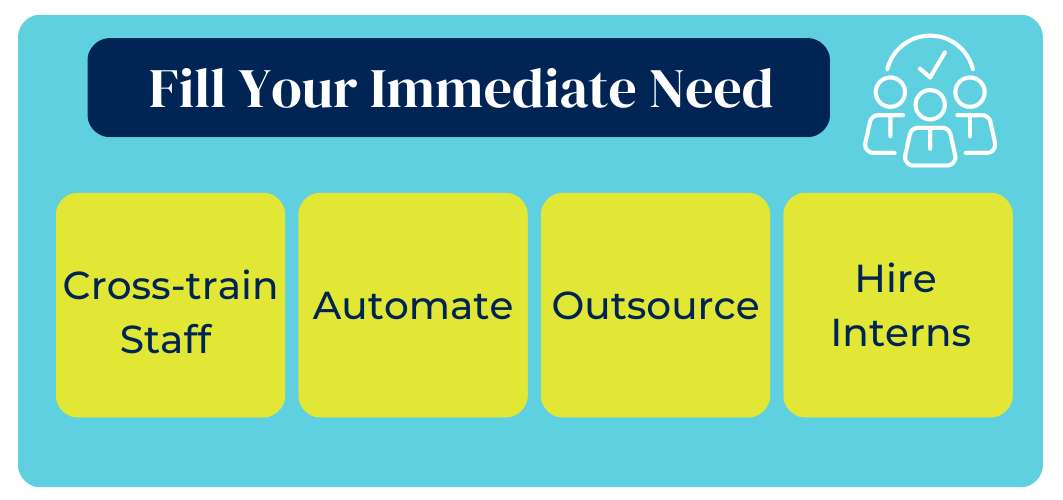
- Cross-train employees. This fills gaps and gives employees valuable new skills. It may open a path to professional development. Just be careful not to burn out the workers you have left. Expecting people to do more work for the same pay or to go a week or more without a day off can lead to resentment – and resignations.
- Automate and outsource whatever you can. When you calculate how many workhours are freed up for more important tasks, automation software can be a smart investment. You can also take advantage of freelancers and temporary workers to scale your workforce up or down as needed.
- Hire interns. Interns rarely get benefits and don’t expect to be paid as much as permanent employees. You can pay them a salary or work with a nearby college or university to provide course credit. Combining pay and credits will get you the biggest pool of candidates.
You can also increase your candidate pool by thinking beyond college students. Work with local high schools and trade associations to create student learner programs that ease your labor shortage and teach marketable skills.
Update your recruitment process
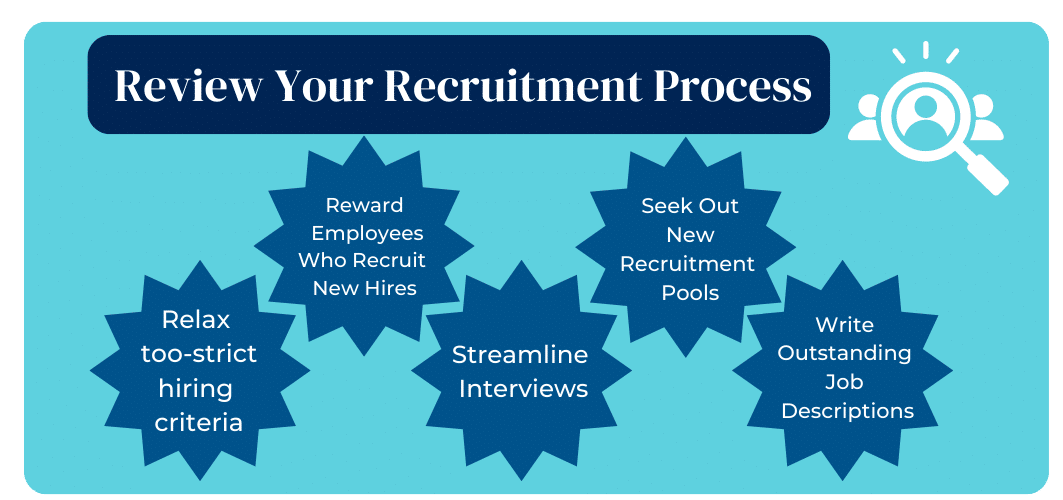
- Take a hard look at your hiring criteria. Is a college degree or a certain amount of experience actually required to do the job? Consider hiring for skills over experience or hiring lower-skilled candidates who can grow into the role.
- Pay bounties to employees who recruit new hires. Candidates referred by existing staff tend to be good fits with strong retention. Keep in mind how much it costs to find a good employee and pay a meaningful bonus. For example, give the referring employee $500 when the candidate accepts the job and another $500 when they clear the 90-day mark.
- Make your job descriptions stand out. Write descriptions that reflect your company culture, like playful, positive, or ambitious. Highlight what sets your workplace apart.
- Streamline your interview process. If a lot of candidates turn down the job or drop out midway through a series of interviews, that’s a red flag. Candidates interview for multiple jobs at the same time. If your process takes too long, requires too much, or creates too much friction, they’ll pass you by.
- Look for new recruitment pools. Running ads is fine, but have you tried partnering with local schools? How about offering skill-building workshops to new grads, career switchers, or people re-entering the workforce? Your best candidates may not be the ones scouring job boards.
Improve your company culture
- Making your business a great place to work will help you hire and retain workers. Ask your employees for anonymous feedback – what’s great about working here? What could use improvement? Review the feedback without getting defensive and identify places you could implement change.
- Prioritize work-life balance. Permit flexible scheduling as much as possible. Encourage people to take time off. Don’t glorify overtime and don’t contact employees outside working hours.
- Create spaces and opportunities for people to socialize throughout the day. All work and no play makes Jack a dull boy – and drains employee morale.
- Promote a positive environment. Recognize and reward people for jobs well done. Practice the old maxim: praise in public, criticize in private.
- Train line managers. People are often promoted because they’re good at their job, but they haven’t a clue how to motivate or inspire others. People will leave a good job with a bad manager. Make sure your managers know how to motivate, discipline, and reward appropriately.
- Practice what you preach. Employees who are required to clock in by 8 or take 45 minutes for lunch notice when management rolls in at 8:20 or takes an hour and a half break.
Build worker satisfaction
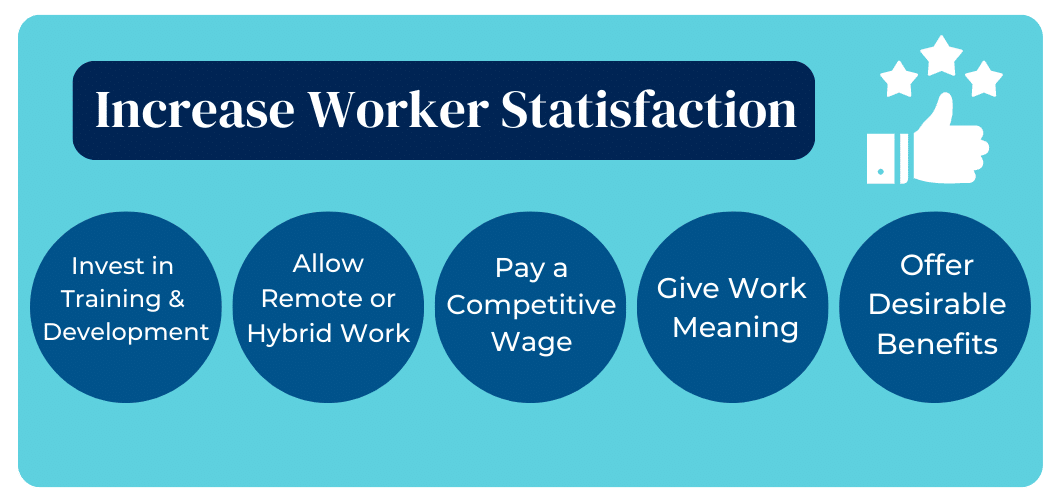
- Invest in training and development. This could mean conference attendance, tuition reimbursement, or regular in-house workshops.
- Allow some degree of remote or hybrid work, if you can. One in three remote workers would rather take a pay cut than return to the office full time.
- Pay fair wages. With inflation high, payroll is not the place to pinch pennies. Use a cost of living calculator to find out what it costs to live in your area and pay employees enough to comfortably meet their needs.
- Share your vision. Giving employees something to work for beyond a paycheck leads to better retention. Make sure people know how the work they do each day moves everyone closer to their goals.
- Review your benefits package. Look at what your competitors offer and survey your employees to learn what they want. Besides the traditional health insurance and retirement plan, today’s in-demand benefits include paid parental leave for both parents, flexible PTO, and wellness programs.
Short-term fixes won’t deal with the labor shortage
Historically, labor shortages were caused by skills gaps or changing markets. This one is different. It reflects a once-in-a-generation shift in Americans’ relationship with work.
Applying a Band-Aid fix and riding out this shortage isn’t an option. Besides the abundance of open jobs, technology has made it easier than ever for people to strike out and start their own business. Solving the labor shortage long term will mean some fundamental changes to how companies view employees.
Businesses that come out of this labor shortage strong and ready to weather the next one are those that realize workers are not a commodity. In fact, they’re the most valuable investment you can make in your business.
Tired of dealing with this labor shortage alone? We’ve got your back. Reach out to see how we can help you find the right talent – guaranteed.
Share this article

